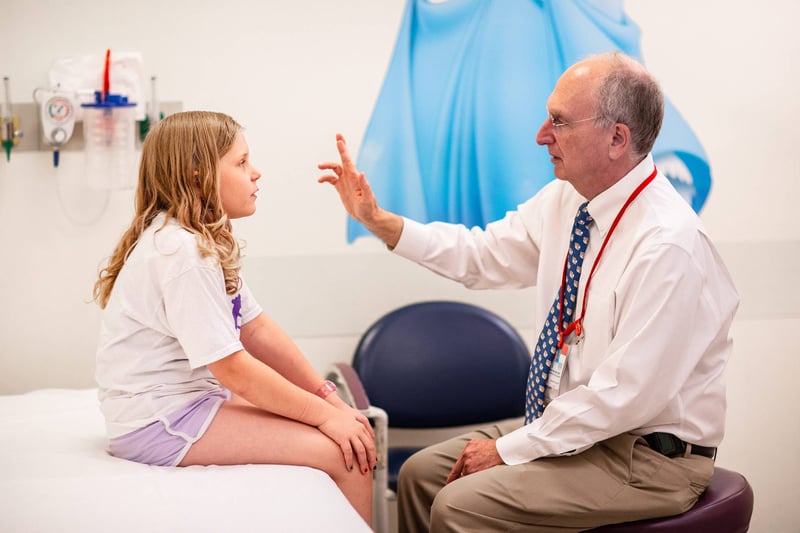Condition
Pediatric Myasthenia Gravis
Key Points about Myasthenia Gravis
- Myasthenia gravis (MG) is a disorder that causes weakness in muscles around the body. It mostly affects the eyes, mouth, throat, arms and legs.
- Transient neonatal MG is a temporary form of MG. It can happen in babies born to mothers with MG. The symptoms go away weeks or months after birth.
- Juvenile MG is an autoimmune disorder. It is a lifelong condition that may go in and out of remission.
- Congenital MG is a very rare form of MG that is inherited. Symptoms usually start at birth and are lifelong.
- Treatment may include medicines, surgery or blood product infusions. In severe cases, a child may need a breathing machine (ventilator) to help with breathing.
- Issues may come up as a child grows and develops. Children with MG need to see their healthcare team often.
Frequently Asked Questions
What is myasthenia gravis?
What causes myasthenia gravis?
Who is at risk for myasthenia gravis?
What are the symptoms of myasthenia gravis?
How is myasthenia gravis diagnosed?
How can I help prevent myasthenia gravis?
How is myasthenia gravis treated?
What are possible complications of myasthenia gravis?
How can I help my child live with myasthenia gravis?
When should I call my child’s healthcare provider?

Neurology Treatment at Children's National Hospital
Every one of our neurologists has specialized training in child neurology and all have fields of expertise in subsets of child neurology. Discover more about the treatments we offer.

Providers Who Treat Myasthenia Gravis
 Aasha's Rare Gift Will Help Other Babies Grow up Healthy
Aasha's Rare Gift Will Help Other Babies Grow up HealthyTesting the descrption field
Departments that Treat Myasthenia Gravis

Neuromuscular Medicine Program
The Neuromuscular Medicine Program leverages the expertise of a multidisciplinary teams, cutting-edge research and innovative technologies to care for a spectrum of neuromuscular conditions affecting children from infancy to age 21.










